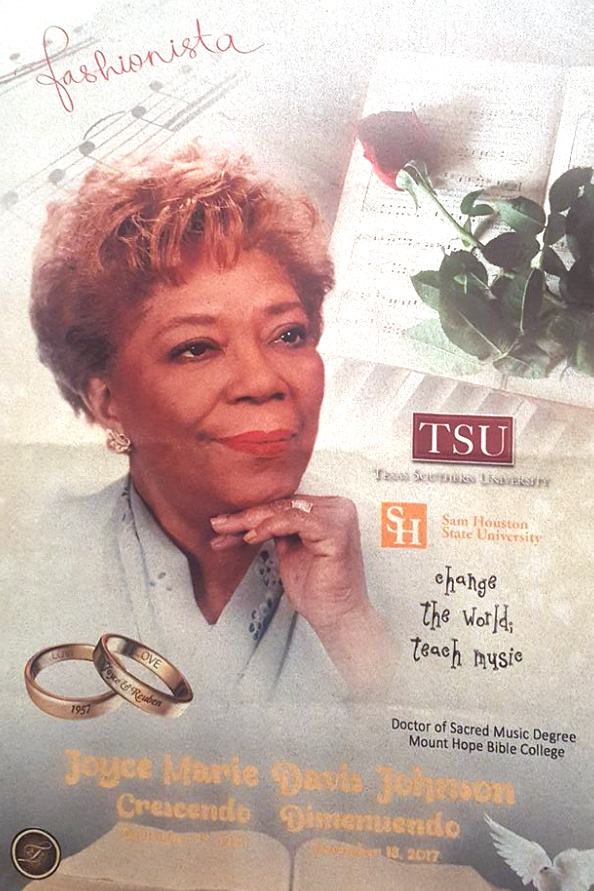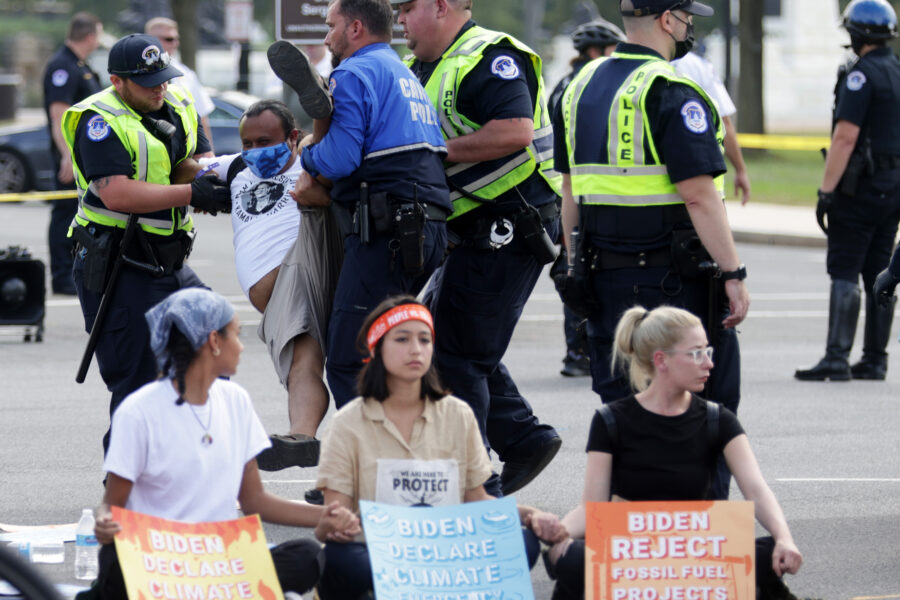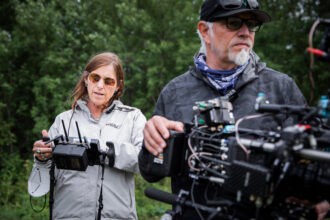Hurricane-Related Deaths Keep Happening Long After a Storm Ends
The raging winds and relentless rains of Hurricane Harvey—which pinwheeled through Houston in 2017, obliterating homes, shattering livelihoods and killing 36 people in the area—had long subsided when Chrishelle Palay and her family experienced yet another loss.
Nearly three months after Harvey hit, Palay’s aunt, 81-year-old Joyce Johnson, died after a long battle with chronic obstructive pulmonary disease. And although Palay and her family members could never prove it definitively, they strongly suspected her death was somehow related to the storm.

“I’m not a doctor, but all I would say is that she declined rather quickly after Hurricane Harvey,” Palay, who’s 49, recalled in a phone interview. “So I am positive and quite certain that there’s definitely a correlation.”
New research suggests she’s right that the fatal aftereffects of an extreme weather event lingers. A team of researchers at Stanford University have found that tropical cyclones—a classification that includes hurricanes and tropical storms—can cause an increase in the number of deaths in an affected community as much as 15 years afterward.
The analysis, which was published this month in the journal Nature, found that the average tropical cyclone led to anywhere from 7,000 to 11,000 excess deaths.
For recent storms like Hurricanes Helene and Milton, that would mean deaths linked to their impacts can be expected to continue until 2039.
The research team, led by the study’s chief author, Solomon Hsiang of Stanford’s Doerr School of Sustainability, examined 501 storms that struck the continental United States from 1930 to 2015.
The authors wrote that tropical cyclones impose “an undocumented mortality burden that explains a substantial fraction of the higher mortality rates along the Atlantic coast.” The researchers said that over time, excess deaths from storms may account for as much as 5 percent of all deaths there.
Explore the latest news about what’s at stake for the climate during this election season.
According to government estimates, the immediate effects of a typical tropical cyclone results in 24 direct deaths, including those who are victims of drowning because of flooding.
The Stanford team’s calculation of excess deaths took into account the long tail of a storm’s consequences by studying increases in each affected state compared to normal death rates beforehand. Many factors could contribute, the researchers noted, from damaged homes and depleted savings to social disruptions and reduced access to basic services.
“For example, individuals may use retirement savings to repair damage, reducing future healthcare spending to compensate; family members might move away, removing critical support when something unexpected occurs years later; or public budgets may change to meet the immediate post-[storm] needs of a community, reducing investments that would otherwise support long-run health,” the researchers write, noting that this complex chain of events makes it harder to connect a storm to later deaths.
Using those measures, tropical cyclones, “previously thought to be unimportant for broader public health outcomes,” meaningfully affect mortality risk, the researchers wrote. That’s particularly the case for infants, people 44 years old and younger and Black Americans.
“We got the data together and we sort of thought, ‘You know, maybe six months or a year after a hurricane, there’ll be elevated rates of mortality,” said Rachel Young, a member of the research team who is now at the University of California, Berkeley. “And then we were just really surprised that the effect was so high for so long.”
Hsiang said that surprise compelled researchers to double and triple-check their data. “It was many years of trying to come to terms with it and figure out if we had made an error,” he said.
Others who’ve studied how climate change affects public health in a macro sense said the findings of the study—while surprising in terms of the lengths of the impacts—align with what many researchers have long suspected about tropical cyclones.
“Think about Hurricane Katrina, and how those communities took years and decades to recover,” said Ethan Katznelson, a Manhattan-based cardiologist who studies climate and health. “It makes a lot of sense, this idea that there’s really long-term changes in the society that’s affected that can lead to long-term effects.”
Those effects are just beginning for those who live in areas where two back-to-back hurricanes—Helene and Milton—made landfall in recent weeks.
Seema Wadhwa, executive director of environmental stewardship for the managed-care consortium Kaiser Permanente, said that the victims of major storms typically require health care to address acute issues, such as immediate injuries from extreme weather; cumulative issues, such as molds caused by flooding that can lead to respiratory problems; and long-term challenges with emotional health, which can take years to identify.
“These are some of the impacts that really are just not talked about—or thought about—in the moment, because they may either be longer term or indirect,” Wadhwa said. “But you know that mental health and social isolation, that loss of community, is definitely something that does have an actual health impact.”
In Houston, Chrishelle Palay is all too familiar with that broad range of impacts. She remembers well how family members worried frantically about her aunt after Harvey struck in 2017.
“When Hurricane Harvey came, the water started rising and our city was paralyzed because we could not move at all,” Palay recalled, adding that they relied on one of her aunt’s caregivers for updates about her condition—and the flooding in her home.
“Because she has COPD, she could not really move around a lot,” Palay said. “And then it was days and days before we could even get on roads to try to get to see people. And she was saying, ‘Well, I’m starting to smell something. I don’t know what it is.’ So by the time we were able to get there, when we walked in, the house automatically smelt the stench of mold.”
Palay and her family removed her aunt from the damaged home. She died three months later.
“When Hurricane Harvey came, the water started rising and our city was paralyzed because we could not move at all.”
— Chrishelle Palay
In the years since, Palay has become the executive director of an organization called the Houston Organizing Movement for Equity Coalition, a collection of local groups devoted to assisting those in need in the region with their continuing recovery from Harvey.
And when Hurricane Beryl bore down on Texas, causing widespread power outages during the height of summer heat in early July, Palay and her family worked to move her 75-year-old mother, Melba Elder, who has multiple medical conditions, to a place with air conditioning.
As Milton and Helene spun their way toward shore, Palay said her thoughts frequently turned toward her late aunt. She felt anxious for the people bracing for unknown impacts.
And there was another emotion: anger. Anger that global warming has led to super-charged storms—and anger that not nearly enough is being done to address climate change.
“It doesn’t have to be like this,” she said of the warming planet. “We have a broken system, and those that can really make the changes haven’t done so. And so we’re dealing with a broken system of the past while dealing with a future that we know is full of disasters.”
About This Story
Perhaps you noticed: This story, like all the news we publish, is free to read. That’s because Inside Climate News is a 501c3 nonprofit organization. We do not charge a subscription fee, lock our news behind a paywall, or clutter our website with ads. We make our news on climate and the environment freely available to you and anyone who wants it.
That’s not all. We also share our news for free with scores of other media organizations around the country. Many of them can’t afford to do environmental journalism of their own. We’ve built bureaus from coast to coast to report local stories, collaborate with local newsrooms and co-publish articles so that this vital work is shared as widely as possible.
Two of us launched ICN in 2007. Six years later we earned a Pulitzer Prize for National Reporting, and now we run the oldest and largest dedicated climate newsroom in the nation. We tell the story in all its complexity. We hold polluters accountable. We expose environmental injustice. We debunk misinformation. We scrutinize solutions and inspire action.
Donations from readers like you fund every aspect of what we do. If you don’t already, will you support our ongoing work, our reporting on the biggest crisis facing our planet, and help us reach even more readers in more places?
Please take a moment to make a tax-deductible donation. Every one of them makes a difference.
Thank you,
David Sassoon
Founder and Publisher
Vernon Loeb
Executive Editor
Share this article
- Republish
Disclaimer: The copyright of this article belongs to the original author. Reposting this article is solely for the purpose of information dissemination and does not constitute any investment advice. If there is any infringement, please contact us immediately. We will make corrections or deletions as necessary. Thank you.








